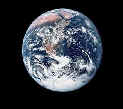News, November 2010
www.aljazeerah.info
Archives
Mission & Name
Conflict Terminology
Editorials
Gaza Holocaust
Gulf War
Isdood
Islam
News
News Photos
Opinion Editorials
US Foreign Policy (Dr. El-Najjar's Articles)
|
Editorial Note: The following news reports are summaries from original sources. They may also include corrections of Arabic names and political terminology. Comments are in parentheses. |
US Obesity Rate Likely to Hit 42% by 2050, Due to Social Contacts with the Obese
LOS ANGELES, Nov. 5, 2010 (Xinhua) --
U.S. obesity rate may hit 42 percent by 2050, much higher than previously estimated, a new study suggests.
The rate of obesity among U.S. adults may rise rather than slowing down as previously suggested, according to the study by researchers at Harvard University and Massachusettes Institute of Technology.
The study, published this week in the journal PLoS Computational Biology, runs counter to recent assertions by some experts that the obesity rate, which has been at 34 percent for the past five years, may have peaked.
For the last few years, the U.S. Centers for Disease Control and Prevention has placed the adult obesity rate at 34 percent, with another 34 percent of Americans overweight but not obese.
But the new study predicts that adult obesity rates will rise for another 40 years before leveling out. And before reaching that plateau, 42 percent of adults will be obese predicts.
In the study, the researchers used a sophisticated model that views obesity like an infectious disease. The modeling was done after examining the spread of obesity via "social networks" in the long-running Framingham Heart Study Network. In the analysis, a social network includes family, co-workers, friends and neighbors.
The spread of obesity among U.S. adults in recent decades due to social contacts can not be ignored, the researchers said.
That idea is based on the "social contagion" theory of obesity, which means that the more obese people you know, the greater your chances of gaining weight, according to the researchers.
"It's definitely true that the percent of obese people has slowed down," said study author Alison Hill, a graduate student in Harvard's Program for Evolutionary Dynamics, Biophysics Program. "But our results suggest it is not the end."
The prediction is a "best-case" scenario, said Hill and Dr. David Rand, a research scientist at Harvard who was also involved in the study. That means the obesity rate might rise even higher than 42 percent.
Obesity is defined as having a body-mass index (BMI) of 30 or higher. For instance, a person 5-feet-5-inches tall who weighs 200 pounds has a BMI of 33 and is considered obese.
Under this theory, a normal weight person has a two percent chance of becoming obese in any given year, according to the researchers.
That number increases by 0.4 percent with each obese social contact a person has, meaning that a person with five obese contacts doubles his or her risk for obesity.
On the other hand, when it comes to losing weight, an obese adult has a four percent chance of losing enough to become just overweight in any given year, the team found.
But they did not find that weight loss had much to do with social contacts. So an obese person who hangs out with normal-weight friends will not necessarily lose pounds because of those contacts.
Other factors play into the spread of obesity, Hill and Rand explained, including the rate of "non-social transmission" of obesity, such as easier access to unhealthy foods, and the rate of "recovery" from obesity, or a weight loss that puts people below a BMI of 30.
While the non-social transmission factors are still most important in the spread of obesity, Rand said, the role of social transmission has expanded in the past four decades.
"One good take-home point is it's actually in your best interest to help your friends lose weight," Hill said. "The more obese friends you have, the more likely you are to gain."
Editor: Wang Guanqun
Fair Use Notice
This site contains copyrighted material the use of which has not always been specifically authorized by the copyright owner. We are making such material available in our efforts to advance understanding of environmental, political, human rights, economic, democracy, scientific, and social justice issues, etc. We believe this constitutes a 'fair use' of any such copyrighted material as provided for in section 107 of the US Copyright Law. In accordance with Title 17 U.S.C. Section 107, the material on this site is distributed without profit to those who have expressed a prior interest in receiving the included information for research and educational purposes. For more information go to: http://www.law.cornell.edu/uscode/17/107.shtml. If you wish to use copyrighted material from this site for purposes of your own that go beyond 'fair use', you must obtain permission from the copyright owner.
|
|
|
|
||
|
||||||


